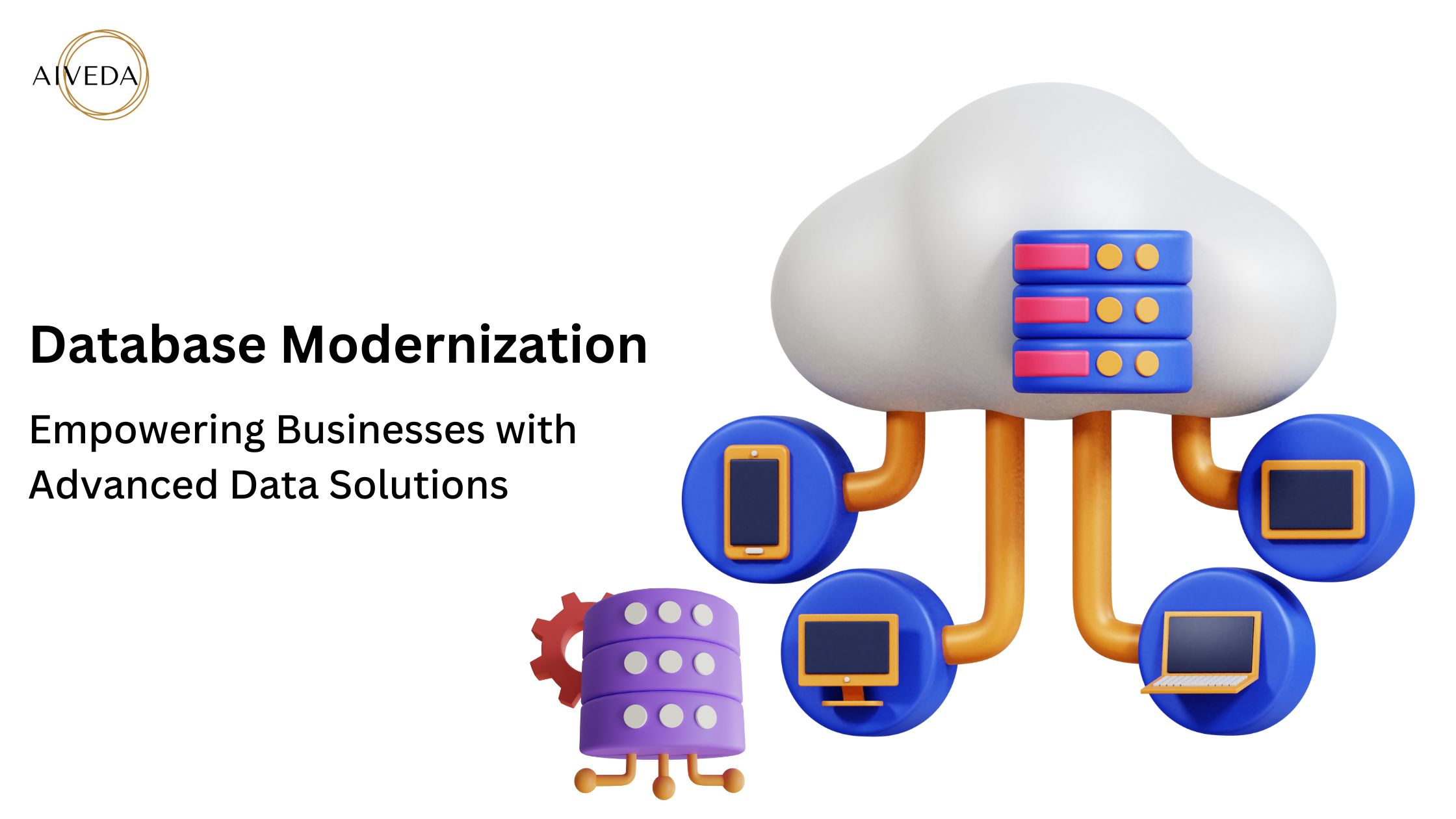
In an era where data is paramount, the efficiency, security, and scalability of your database systems can significantly impact your operational effectiveness and competitive edge. Database Modernization represents a critical step forward for businesses looking to harness the full potential of their data assets. This blog delves into the concept of Database Modernization, outlining its importance, the services involved, and the transformative impact it can have on your organization.
The Need for Database Modernization
As businesses evolve, the volume, variety, and velocity of data they handle increase exponentially. Legacy databases, once the backbone of information systems, now pose limitations on performance, scalability, and integration capabilities. Database Modernization is the process of upgrading these outdated systems to more advanced, flexible, and efficient solutions. It involves moving from traditional, monolithic databases to structures that support today’s dynamic business needs.
Key Drivers for Modernization
- Enhanced Performance: Modern databases offer improved data processing speeds and efficiency, facilitating faster decision-making and responsiveness.
- Scalability: They allow businesses to scale their data infrastructure up or down based on demand, without significant downtime or cost implications.
- Security and Compliance: Upgrading to modern database systems helps in bolstering data security measures and ensuring compliance with evolving data protection regulations.
- Integration and Accessibility: Modernization enables better integration with other tools and systems, enhancing data accessibility and fostering a more connected IT ecosystem.
Database Modernization Services: Catalyzing Transformation
Embarking on a Database Modernization journey can be complex. Professional Database Modernization services play a crucial role in simplifying this transition, offering expertise and resources to ensure a smooth, efficient, and successful upgrade.
Assessment and Strategy Development
The first step in any Database Modernization project involves a thorough assessment of the existing database environment. This phase identifies the critical data assets, evaluates the performance of the current system, and pinpoints the limitations that hinder operational efficiency. Based on this assessment, a tailored modernization strategy is developed, outlining the roadmap, technologies involved, and the expected outcomes.
Migration Planning and Execution
Database migration is the cornerstone of the modernization process. It involves the careful planning and execution of moving data from legacy systems to modern platforms. This phase addresses the technical challenges of data transfer, ensuring data integrity, minimizing downtime, and configuring the new system for optimal performance. Professional services leverage advanced tools and methodologies to automate and streamline the migration process, reducing the risk of data loss or operational disruptions.
Optimization and Continuous Improvement
Post-migration, the focus shifts to optimizing the new database environment. This involves fine-tuning performance, implementing best practices for data management, and ensuring the system is fully aligned with business objectives. Continuous monitoring and iterative improvements help in maximizing the value of the modernized database, ensuring it remains efficient, secure, and scalable over time.
Training and Support
To fully leverage the capabilities of modern database systems, businesses need to equip their teams with the necessary knowledge and skills. Database Modernization services often include comprehensive training programs and ongoing support, ensuring that IT staff are proficient in managing and maintaining the new system.
The Impact of Database Modernization
Modernizing your database infrastructure can have a profound impact on your business, driving efficiency, innovation, and growth.
- Operational Efficiency: With improved performance and scalability, businesses can handle data-intensive operations more effectively, enhancing overall productivity.
- Data-Driven Decision Making: Modern databases support advanced analytics and business intelligence tools, enabling data-driven strategies and decision-making.
- Competitive Advantage: By harnessing the latest database technologies, organizations can innovate faster, adapting to market changes and customer needs more swiftly.
Streamlining Database Operations with Automation
Leveraging Automation Tools
Modernizing your database isn’t just about upgrading its architecture; it’s also about optimizing how you manage it. Automation plays a crucial role in this, enabling teams to deploy, manage, and monitor databases more efficiently. Tools for database provisioning, patching, and backup can significantly reduce manual effort and the risk of human error.
Continuous Monitoring and Optimization
Post-modernization, it’s vital to continuously monitor your database environment to ensure it operates at peak efficiency. This involves tracking performance metrics, identifying bottlenecks, and fine-tuning configurations. Regular optimization keeps your database responsive, cost-effective, and aligned with evolving business needs.
Preparing for Future Data Demands
Scalability for Tomorrow
A modernized database is not just about meeting today’s needs but also about anticipating future demands. Scalability is a critical consideration, ensuring your databases can handle increased loads without compromising performance. This foresight is essential for supporting business growth and emerging data-intensive applications.
Embracing Emerging Technologies
The database technology landscape is continuously evolving, with new advancements such as in-memory databases, AI-driven data management, and blockchain for data integrity. Staying abreast of these technologies and incorporating relevant innovations into your database systems ensures your infrastructure remains cutting-edge.
Foster a Culture of Continuous Learning
Database Modernization is as much about technology as it is about people. Fostering a culture of continuous learning and improvement among your IT staff ensures they are equipped with the latest database management skills and best practices. This human element is crucial for maximizing the value of your modernized database environment.
Conclusion
Database Modernization is not just an IT upgrade; it’s a strategic investment in the future of your business. By embracing modern database solutions and leveraging professional modernization services, organizations can transform their data management practices, unlocking new levels of efficiency, security, and agility. As we move forward, the importance of having a robust, scalable, and modern database infrastructure will only continue to grow, making Database Modernization an essential step for businesses aiming to thrive in the digital era.